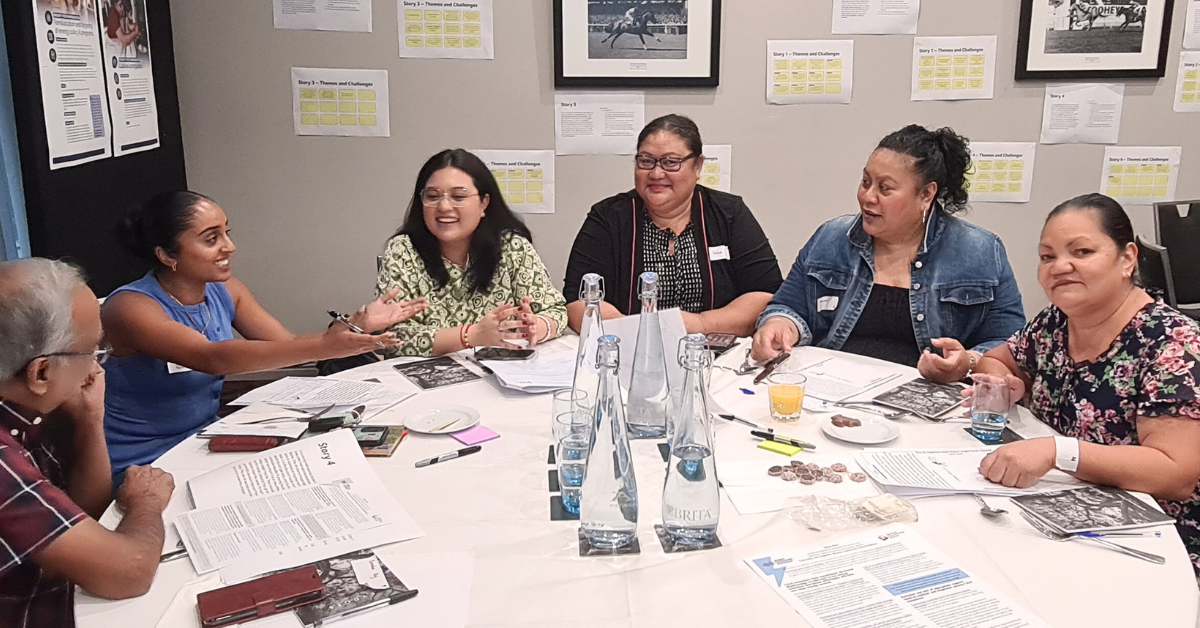This speech was delivered by Rosemary Sinclair at the Australian Energy Market Commissions’ ‘Making market transformation work: Strategic priorities for Australian energy market development.’ event on September the 12th 2017.
Thank you for the kind introduction and the opportunity to provide our perspective on market transformation and the strategic priorities agenda.
I want to cover three topics in my remarks today.
Firstly, I will provide a view on the transformation challenge as we see it, and the role that this process can play in making it work..
Secondly, I will comment on the framework and strategy the AEMC proposes in the Discussion Paper… I want to make it clear at the outset that we believe it provides a very positive and solid basis for our shared task of managing the transformation.
And thirdly and finally I want to provide a consumer view of the affordability and reliability issues that are at the heart of the current debate. Putting consumer outcomes clearly at the heart of Strategic Priorities for the Energy Sector is what distinguishes this work.
1. The transformation challenge – why we need a strategic priorities framework
In a market that is changing in an unprecedented way, where there are tens of major policy and regulatory reviews/processes/initiatives underway, the critical threshold question to ask is do we need another ‘strategy’?
I am also reminded of the Mike Tyson quote that “everyone has a strategy until they are punched in the mouth”.
We have the Finkel Blueprint – shouldn’t we just get on with implementing the 50 recommendations? The answer in our view is an unequivocal yes.
And the reason goes to the nature of the transformation in an extraordinarily complex and interdependent market
…the need to ensure the orderly transition to a lower emissions economy via a reliable supply of electricity, a secure system and affordable services for households and businesses.
a challenge that cannot be ‘solved’ or ‘managed’ via set of interventions at a point in time but will necessarily require iteration and adjustment over time as we respond to changing conditions on the ground:
- interdependencies in a networked ‘system’
- changing community and consumer expectations
- new economic circumstances and policy priorities
- new technologies
We need a high-level framework to help the sector and the community discuss, evaluate and respond to the challenges of “orderly transition” by managing security and reliability risks proactively with a focus on consumer affordability outcomes.
To re-build trust and confidence in the sector, we need to be able to demonstrate that the institutions of the NEM are responding to the affordability and reliability challenges in an organized and proactive way. We need to reconcile, sequence and prioritise the recommendations of the Finkel, ACCC and other reviews with work that is already underway.
2. The Strategic Priorities framework
The AEMC is to be commended for working collaboratively with AER, AEMO and ECA to
develop the strategy and ‘framework proposed’ in the discussion paper
To help lift us up and out of the policy, regulatory and commercial day-to-day [the long grass] and provide a longer-term, and importantly agile, perspective.
The discussion paper defines the transformation challenge in concrete terms via a set of clear goals and a complete picture of the energy sector starting with a set of ?outcomes for consumers.. affordability, information, participation and protection.
Outlining an analytical framework which has consumer outcomes both households and business as the overarching focus, the WHY
And recognises the need to integrate Emissions with Energy policy to secure good consumers outcomes delivering a secure system and reliable supply,
Using approaches and initiatives.. such as efficient markets, regulation – the HOW to develop solutions to problems, – the WHAT
Underpinned by good sector governance.
We also like that it:
Is thematic – decentralization, affordability etc.
Recognises the need to ‘adapt’ and iterate in a ‘holistic way’
Identifies the interdependencies.
Provides a set of milestones that can be used to assess progress and course correct.
Provides a consolidated and well organized list of the work that is underway against each of the key themes.
So we support the broad outlines of the framework – it provides a toolkit to think about and manage the transformation.
The task now as a sector is to have the more detailed discussions under each of the headings with a view to developing a shared understanding of the outcomes we are working to, how we plan to get there, and how we are travelling.
It is critical that in developing and applying this framework that we maintain focus on CONSUMER outcomes ? THE WHY ? ahead of the HOW and the WHAT.
3. A consumer view of the strategic priorities
We’re thinking about Consumer Outcomes, the WHY on a number of levels.
The short term – the NOW
The first is the acute energy affordability challenges many consumers are facing right now.
20 per cent plus prices rises on the back of a ten-year period where prices doubled leave many consumers with nowhere to go.
We’re expecting the incidence of debt and disconnection to rise.
We’re expecting consumers who have not previously been in difficulty to be struggling now to pay their bills.
We’re expecting some small businesses to close down because of power costs.
The transformation strategy THE NEXT must begin with tangible measures to cushion the impact of these prices rises now.
I would challenge any view that consumers need to learn to live with price hikes and volatility of the magnitude we seeing now, that they are a part-and-parcel of transformation –
The price signals needed for efficient resource allocation and investment are only evidence of an effective market if the investments occur…otherwise they are signals of a market not working for consumers.
High prices and volatile prices are undermining the transformation project in the minds of consumers
Passing through risk premiums to consumers? for disorderly transformation will lead to louder calls for heavy regulation.
We recently had a call from an energy consumer in Gladstone, Leslie, who was struggling to reconcile higher prices with watching the steady procession of LNG tankers heading out of the port. Consumers sense someone is winning.. and it’s not them.
Which leads inevitably to Governments – which rightly – can and will intervene in markets when the affordability of an essential service is threatened.
We’re seeing the Commonwealth and state governments responding now on both the supply and demand sides of the market.. seeking to influence the way energy companies are behaving, through policy, by investing in generation and by directly supporting consumers.
The important point to make here is that a Strategic Priorities framework can frame efforts to both provide immediate relief AND advance the transformation agenda.
The Prime Minister’s recent intervention in electricity retail is good example of how to think about this task of the NOW in the context of a plan for the NEXT
… his starting point was a concern about energy affordability, which he traced through to outcomes in the retail market and underlying problems around discounting and communication.
By starting with the WHY the debate moved beyond a discussion about switching and the logic of competition – the HOW -?to one that is grounded in the reality for consumers who are time poor, who are struggling to evaluate the myriad of offers in the market, who may be ineligible for discounts etc. THE WHAT… AND THE NOW
This means there is an opportunity for retailers and policy makers to embed the ‘iterative’ rather than prescriptive approach to design, test and refine different approaches to task of alerting consumers that their discount has expired because the focus is on the OUTCOME – bringing bills down.
We’ve also been pleased to see AEMO and ARENA applying this philosophy through the demand response pilots, where they are leveraging a pressing and immediate need – keeping the power on this summer – to test and refine a new approach.
Importantly, the Prime Minister’s retail agenda leaves space for a pro-market, competitive response from the retailers that builds trust and confidence in their services and heads-off the need for heavy-handed regulatory interventions down the track.
In the longer-term,
We don’t see how a prescriptive, compliance-focused model and industry culture can work in the new environment.
We will be looking to the Strategic Priorities framework to embed a preference for industry-led, consumer supported innovative solutions in decision-making across the sector.
A key question as we develop the Strategic Priorities is how do they support the shift from an ‘assets’ and ‘infrastructure’ mindset to a ‘customer’ and ‘services’ mindset?
How do we make sure that sector culture doesn?t trump a consumer focused strategy one more time?
Maintaining a laser-like focus on affordability as the key WHY in the longer-term decisions about the transformation will help drive the needed culture transformation.
By prioritizing affordability I do not mean to suggest that we take greater risks on security and reliability.
What I am saying is that we should not assume, as we sometimes do in this sector, that we need to spend billions of dollars (that consumers pay for) on hard infrastructure to get the outcomes we need.
Affordability is what should cause everyone to pursue, explore, and test cheaper more innovative alternatives.
Affordability is the cue, for example to ask whether a modular alternative that keeps our options open through the transformation is preferable.
Affordability should be the cue for retailers and other businesses to invest in the capability to offer their customers the ‘cost and control’ solutions they are telling us they want.
Conclusion
Consumers are telling us that at the moment they do not have confidence that this sector has their interests at heart.
Working together on a Strategic Priorities Framework for the whole sector which focuses on consumer outcomes is a step to re-building that confidence.
Thank you for the opportunity to participate in this important session today and I look forward to discussion.


